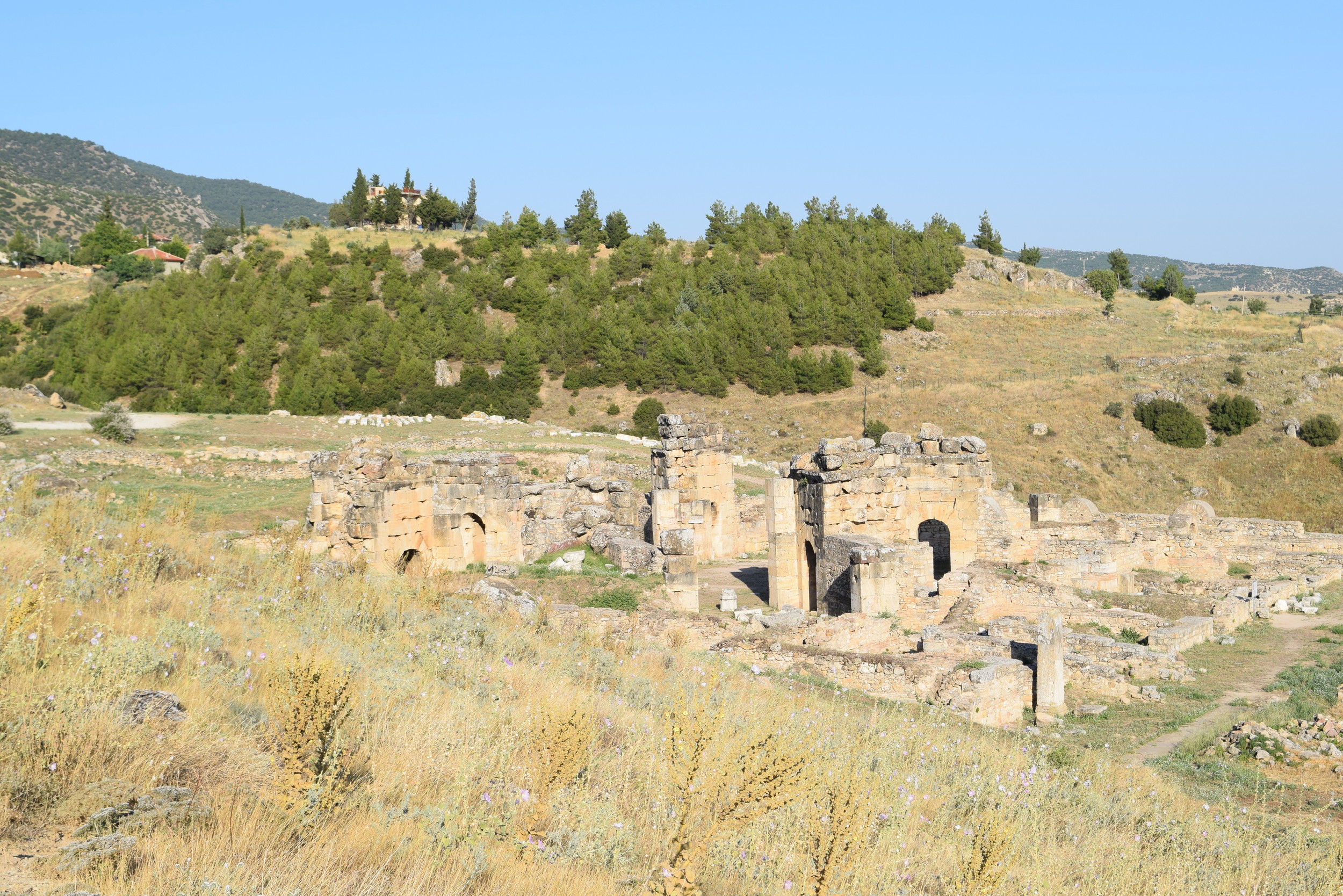7/27
After spending time along the Aegean coast, I headed inland for a quick trip to Pamukkale. Pamukkale offers one of the most jarring sights I saw in Turkey with its white travertine terraces. On the bus ride in to Pamukkale the formation stands out. If it weren’t for the beating sun and heat it could easily be taken for snowy slope. Pamukkale is Turkish for “cotton castle”. It is clear to see where this name came from. The terraces are formed by calcium in the water from the thermal springs. Water from the underground springs flows continuously and fills the pools.
My geology experience is limited to one class I had to take in college to satisfy a science requirement. I wish I could say that from that experience I became a real geologist and could explain how Pamukkale formed. Shockingly, Geology 202 didn’t cover travertine terraces and I wasn’t able to bust out an explanation to impress everyone without the help of guidebooks and the internet.
25 lira (about $9) will get you into Pamukkale. One gate at the base of the formation is in the middle of town and is extremely convenient (also fairly packed with people).
From the gate you head up the hill past several pools. As you walk up the travertine hill the thermal springs flow down over your feet. I can say that this is one of the few times I have truly enjoyed an uphill climb. If you feel tired or just want to relax you can hop in any one of several pools along the way. None of them are particularly deep, but you can get all the way in on some of them. I waited until the evening to actually get in any of these pools. It was very pleasant to sit in the thermal pool after the sun had set and the crowds had left.
The ruins of the Roman town of Hierapolis sit above the travertine. The ruins are included in the Pamukkale ticket and together the whole area is a UNESCO World Heritage Site.
Hierapolis
Though much smaller than the one at Ephesus, Hierapolis’ theater may be more impressive as a result of its backdrop and more complete facade.
Hierapolis contains a gate to hell. To the relief of my readers, I did not enter the underworld. I should also point out that it's not a gate to Hell in the Christian sense. It's where one might go to visit Anchises.
Hierapolis does have a house of the holy to make up for the gate to hell. St Philip the Apostle was martyred in Hierapolis and buried in the city. A martyrium was constructed in Hierapolis during the 5th century. St Philip's tomb was discovered nearby in 2013.
Martyrium of Philip the Apostle
Columns near Philip's tomb
Sunsets appear to be one of those rare things that have universal aesthetic appeal. Viewing the sunset from Pamukkale is particularly stunning with the light and colors reflecting off the pools as the sun recedes behind the mountains in the distance.
Sunset over the terraces
I came to Pamukkale with my Australian mates and were lucky enough to link up with our Dutch friend Anton whom we had met at the hostel in Selçuk. The three of them are great entertainment and added a little more life to the whole experience at Pamukkale. We all left in agreement that the site was worth the entrance fee.


